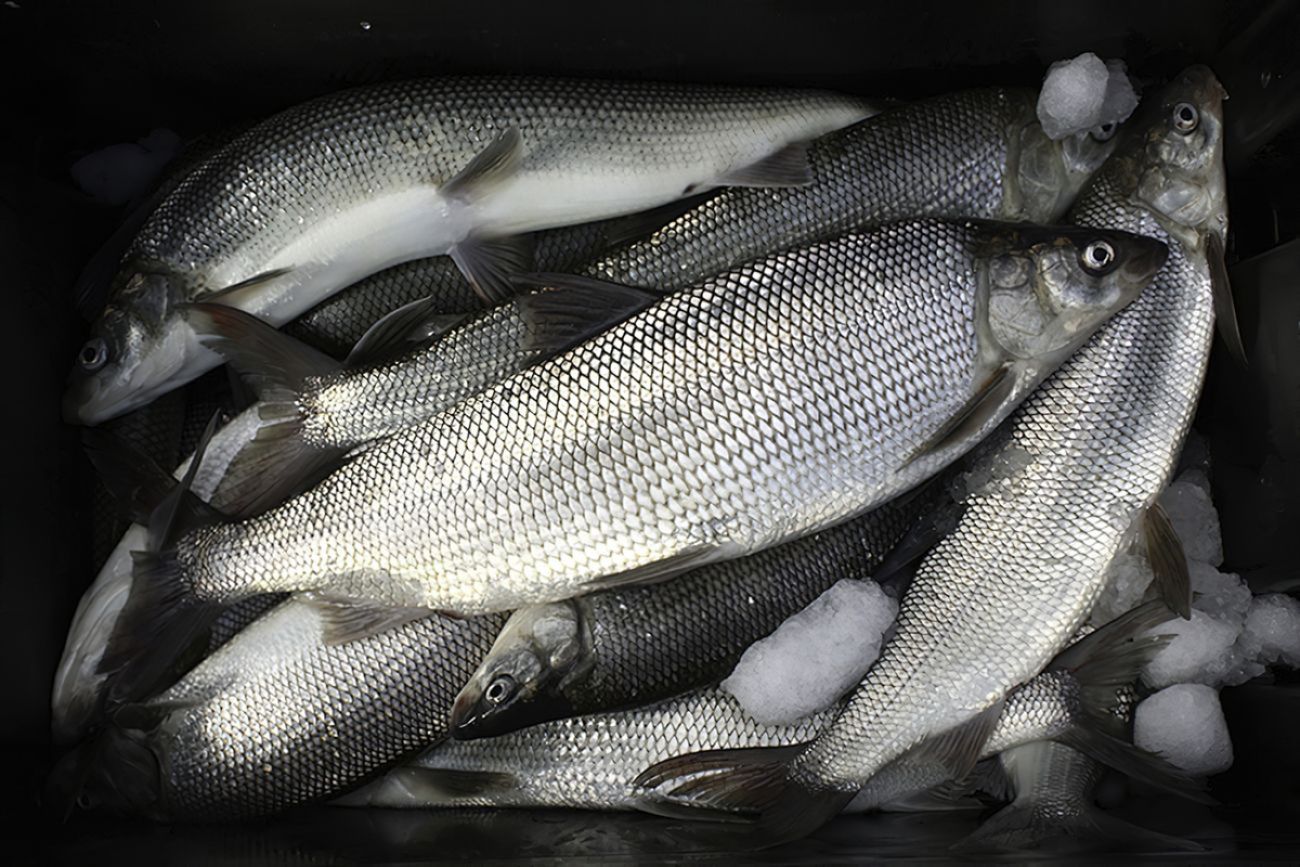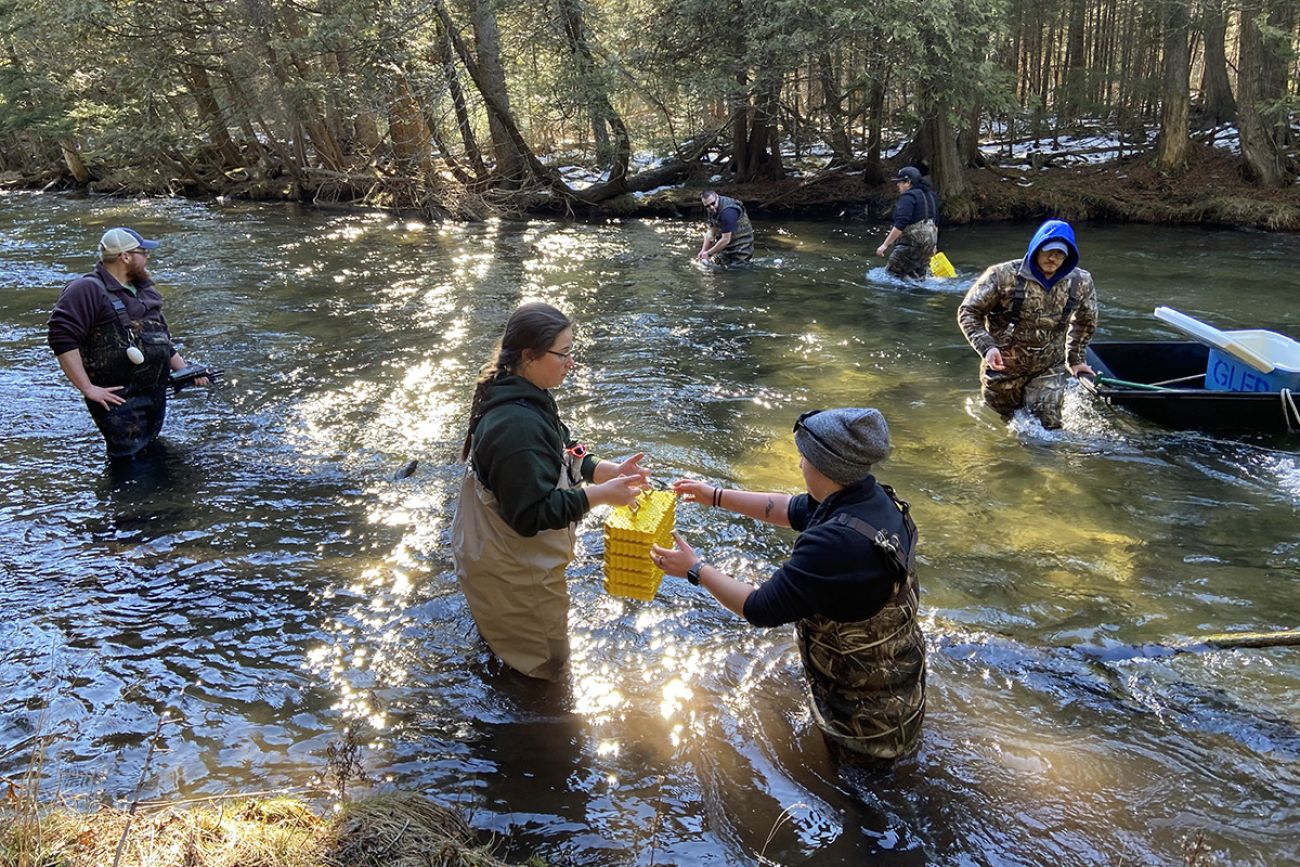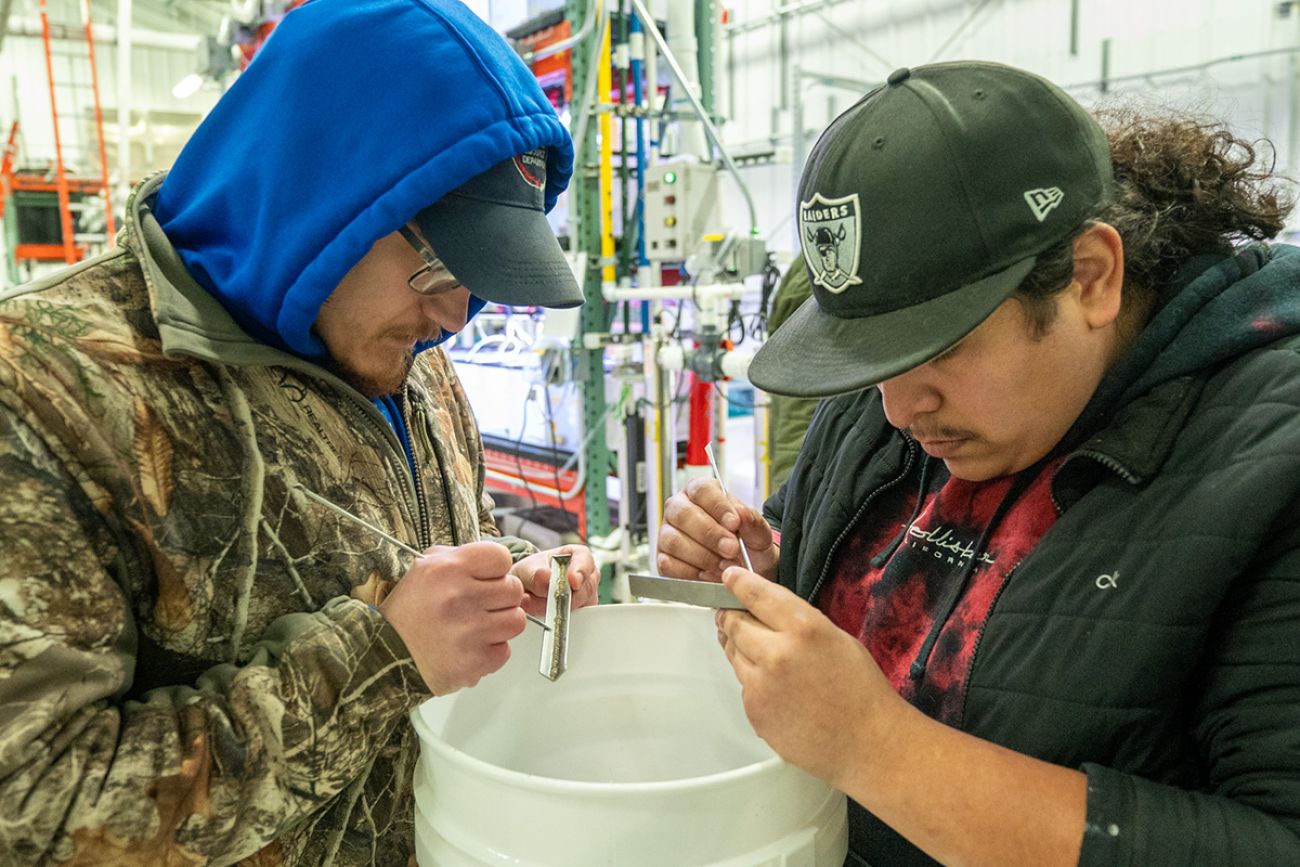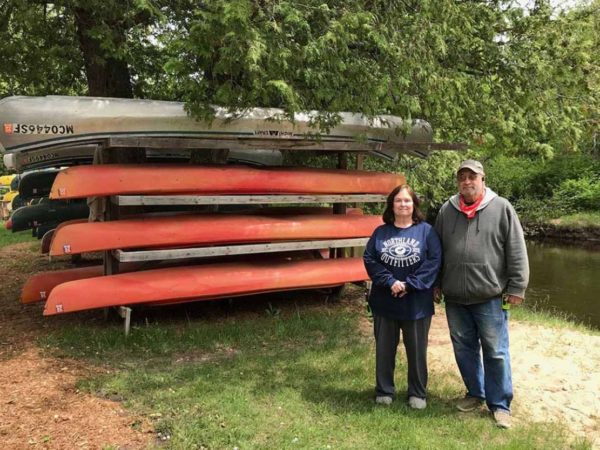
By Kelly House, Bridge Michigan
The Great Lakes News Collaborative includes Bridge Michigan; Circle of Blue; Great Lakes Now at Detroit Public Television; Michigan Public, Michigan’s NPR News Leader; and who work together to bring audiences news and information about the impact of climate change, pollution, and aging infrastructure on the Great Lakes and drinking water. This independent journalism is supported by the Charles Stewart Mott Foundation. Find all the work HERE.
- Whitefish have endured in Michigan for centuries, but are on the brink of collapse in lakes Michigan and Huron
- Their offspring are born on rocky reefs, where they’re killed by sunburn, starvation and predators
- Scientists hope to save them by transferring eggs to rivers to teach whitefish to spawn away from danger
MANCELONA — Northern Michigan’s beloved whitefish are in peril.
For decades, the fish have struggled to breed on the rocky reefs of lakes Michigan and Huron, where their eggs are under attack by invasive species and other threats. Some scientists fear a collapse in just a few years, which could sink Michigan’s commercial fishing industry and a way of life.
“We don’t have a lot of time,” said Kris Dey, hatchery manager for the Little Traverse Bay Band of Odawa Indians.
Like others, the tribe’s diet, culture and economy have been sustained for centuries by the silvery, mild-tasting fish that remains a staple in Up North restaurants.
“Whitefish is synonymous with northern Michigan,” said Mark Smolak, whose family has run the historic Legs Inn in the tip-of-the-Mitt beach town of Cross Village since the 1930s.
Related:
- Warmer winters mean less ice on Lake Michigan, hurting trout and whitefish
- A big fight in Lansing over fishing rules on the Great Lakes
- Invasive mussels now control key Great Lakes nutrients, threatening fish
The fish has almost always been on the menu, Smolak said, and losing it would be like “losing a part of your local culture, a part of your identity.”
So now, a race is on to save the fish before a collapse ripples onto dinner plates and throughout the ecosystem.
The best hope for survival? Collecting whitefish eggs, then using turkey basters, casserole trays and containers resembling giant Lego pieces to plant them in rivers. The hope is to rewire the fish’s brains, so they spawn away from lakes — and danger.
It all starts with 120,000 eggs tethered to the bottom of the Jordan River, where whitefish haven’t traveled for more than a century.

Scientists with the Little Traverse Bay Band of Odawa Indians deposit yellow plastic containers of whitefish eggs into the Jordan River. They hope the fish will pick up the river’s scent, returning there to reproduce each year after they reach adulthood. (Bridge photo by Kelly House)
A severed bloodline
Once abundant throughout the region, lake whitefish love cold water. Historically, they’d spend most of their lives deep in the Great Lakes before returning to spawn near shore, with some laying eggs on shallow reefs and others going inland to rocky river bottoms.
Early Native Americans powdered smoked fish for soup, and European settlers loved them too. In 1695, French explorer Antoine de la Mothe Cadillac, who is credited with founding Detroit, declared that “better fish can not be eaten.”
Those days have been replaced by “a century-and a half of battling the landscape for those fish to even keep going,” said Amanda Holmes, executive director of the Fishtown Preservation Society, a Leland-based nonprofit that owns historic shanties, docks and boats and has a commercial fishing license for whitefish.
The trouble began with European settlers damming rivers and logging forests, which blocked access to fish and choked spawning grounds with sawdust.

Michigan’s commercial fishing industry is heavily dependent on whitefish, which makes up 85% of the annual catch. Since 2011, harvests have plummeted to a quarter of their former size. (Bridge photo by Kelly House)
That killed off the river-spawning bloodline more than a century ago. But whitefish that spawn in the lakes persevered through periods of overfishing, habitat degradation and sea lamprey invasions.
They remain the backbone of Michigan’s commercial fishing industry, making up about 85% of the catch. But state-licensed operations have declined to just 16 from hundreds in the 1970s, and their whitefish harvests have fallen to 1.6 million pounds last year from 6.3 million in 2011. Tribal operations have seen similar declines.
In recent years, invasive quagga and zebra mussels have transformed the Great Lakes ecosystem, creating an existential crisis for whitefish.

Invasive mussel shells are more common than pebbles on the beach near Petoskey. (Bridge photo by Kelly House)
Oceangoing ships brought the bivalves from Europe in the 1980s, and they now carpet the bottom of every Great Lake except Superior. Voracious filter feeders, they have stripped the lakes of nutrients and phytoplankton at the bottom of the food chain.
Because Lake Superior is not infested with mussels, its whitefish population has remained stable.
But in lakes Michigan and Huron, the water’s stunning clarity is the marker of a barren ecosystem — and it exposes whitefish’s delicate eggs to deadly UV rays.
“Imagine laying on the beach and getting so sunburned, your skin falls off,” Dey said. “That’s what happens to these guys.”
The eggs that survive hatch into “a vast wasteland of nothingness,” with little food and predators like invasive round gobies that have a taste for baby whitefish.
Scientists aren’t sure what happens to the few juvenile whitefish that survive that gauntlet, Dey said. A few months after hatching, they venture into deeper waters “and we don’t ever see them again.”
Whitefish typically live 30 years, and researchers say parts of the lakes haven’t seen a good spawning season for 20.
“We don’t know where things are going to be in 10 years,” said Holmes of the Fishtown group. “But there is a sense that they’re not going to be good if we don’t try to do something, and it needs to happen sooner versus later.”
High hopes, high stakes
Michigan’s rivers present a glimmer of hope.
Just as the lakes have become inhospitable, scientists believe decades of restoration work have made rivers capable of supporting whitefish.
The Little Traverse Bay Band, Sault Ste. Marie Tribe of Chippewa Indians, Bay Mills Indian Community, The Nature Conservancy and the Michigan Department of Natural Resources are now working to revive Michigan’s river runs.
The tribes draw inspiration from Wisconsin, where whitefish resumed spawning in the tributaries of Green Bay in the 1990s. Scientists believe that’s a key reason why Green Bay’s whitefish populations are stable, even while the fish struggle elsewhere.
Researchers believe a recovery is possible in Michigan, too. But because whitefish spawn only in the spot where they were born, they need help rediscovering rivers.
“There’s a lot of really good habitat that’s available,” said Matt Herbert, a senior conservation scientist with The Nature Conservancy in Michigan.
“We just need to help them find it.”
Last fall, the team collected eggs from adult fish swimming in Lake Michigan. On a sunny morning last week, they used basters to transfer eggs into yellow plastic containers destined for the Jordan River. Another batch went to the Carp River, a Lake Huron tributary in the Upper Peninsula.

Joseph Tolles, left, and Angel Guerrero, right, count pebble-sized whitefish eggs destined for the Jordan River. (Bridge photo by DeJuan Jordan)
If all goes well, the fish will hatch within weeks, escaping through holes in the boxes. Instead of immediately migrating into Lake Michigan, scientists hope the hatchlings will hang out for a few months in the Jordan River and Lake Charlevoix, where there is ample food and shade — and fewer round gobies.
The hope is the fish will pick up the Jordan River’s scent, prompting them to return there and spawn when they reach adulthood in about five years.
If that happens, Herbert said, scientists will declare success, “and we can move on to the next tributary.”

Using a turkey baster, scientists transfer delicate whitefish eggs into yellow plastic trays, then stacked them into boxes and tethered them to the Jordan River. The hope is that they’ll hatch there, picking up the river’s scent and developing an instinct to spawn there when they reach adulthood. (Bridge photo by DeJuan Jordan)
Re-establish river-spawning populations in multiple parts of the state would give whitefish better odds, said Steve Lenart, a fisheries specialist with the Michigan DNR.
But even if the experiment works, the population may never return to its former glory.
Once they outgrow their inland nursery grounds, whitefish will still spend the bulk of their lives in lakes infested with mussels. And then there’s the threat of climate change, which is warming the Great Lakes.
Michigan has always been at the southern end of whitefish range, Lenart said.
“When you look at the ecology of this animal and then layer it with climate projections,” he said, “that’s certainly a cause for concern.”
The optimistic scenario, he said, is that spawning in rivers will help Michigan’s whitefish populations stabilize, settling into “some new, lower normal.”
Catch more news at Great Lakes Now:
Reimagined St. Ignace memorial to be a showcase of Native American history
Michigan’s lost winter cancels sturgeon season, ski, dog sled races
Featured image: Lake whitefish are known for small heads, silver scales and mild flavor. (Courtesy of Michigan Sea Grant)
1 Comment
-
Get the state and “DNR” out of the picture and let the American Indians handle it.




